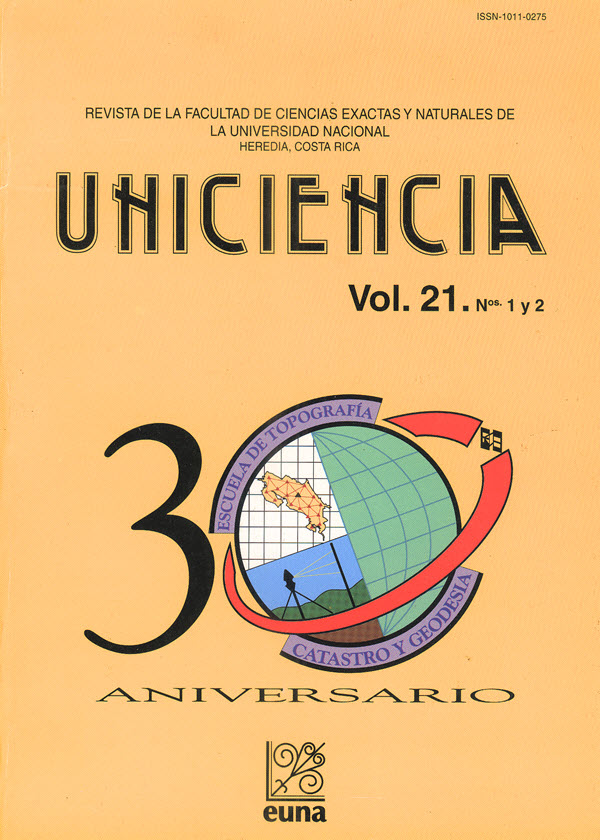The direct effect on geoid computations (ESP)
Keywords:
Helmert´s condensation method, geoid, direct effectAbstract
The most popular technique for the reduction of gravity to the geoid is the Helmert´s condensation method. Two different ways to apply this reduction are studied: the classical approach (Wang and Rapp, 1990 , Heiskanen and Moritz, 1967) and the one by Vanicek and Kleusberg (1987) extended by Martinec et al. (1993 ). The classical approach (Wang and Rapp, 1990 , Heiskanen and Morits , 1967 ) argues that the effect of the condensed layer has to be evaluated at geoid level and not at the terrain level as stated by Vanicek and Kleusberg , 1987. Jekeli and Serpas (2003 ) conclude that both methods are correct from a theoretical point of view ,and the difference is in the order of application of the remove, restore, and downward continuation procedure. The computation of the geoid is analyzed under the two mentioned approaches and the result are compared to geoid undulations coming from GPS and orthometric heights in three different regions in the USA. Numerical assessments of the different approaches shows that both yield similar results in relatively flat areas, and that the classical approach provides better results in mountainous areas with rough topography.
Downloads
Published
Issue
Section
License
Authors who publish with this journal agree to the following terms:
1. Authors guarantee the journal the right to be the first publication of the work as licensed under a Creative Commons Attribution License that allows others to share the work with an acknowledgment of the work's authorship and initial publication in this journal.
2. Authors can set separate additional agreements for non-exclusive distribution of the version of the work published in the journal (eg, place it in an institutional repository or publish it in a book), with an acknowledgment of its initial publication in this journal.
3. The authors have declared to hold all permissions to use the resources they provided in the paper (images, tables, among others) and assume full responsibility for damages to third parties.
4. The opinions expressed in the paper are the exclusive responsibility of the authors and do not necessarily represent the opinion of the editors or the Universidad Nacional.
Uniciencia Journal and all its productions are under Creative Commons Atribución-NoComercial-SinDerivadas 4.0 Unported.
There is neither fee for access nor Article Processing Charge (APC)






